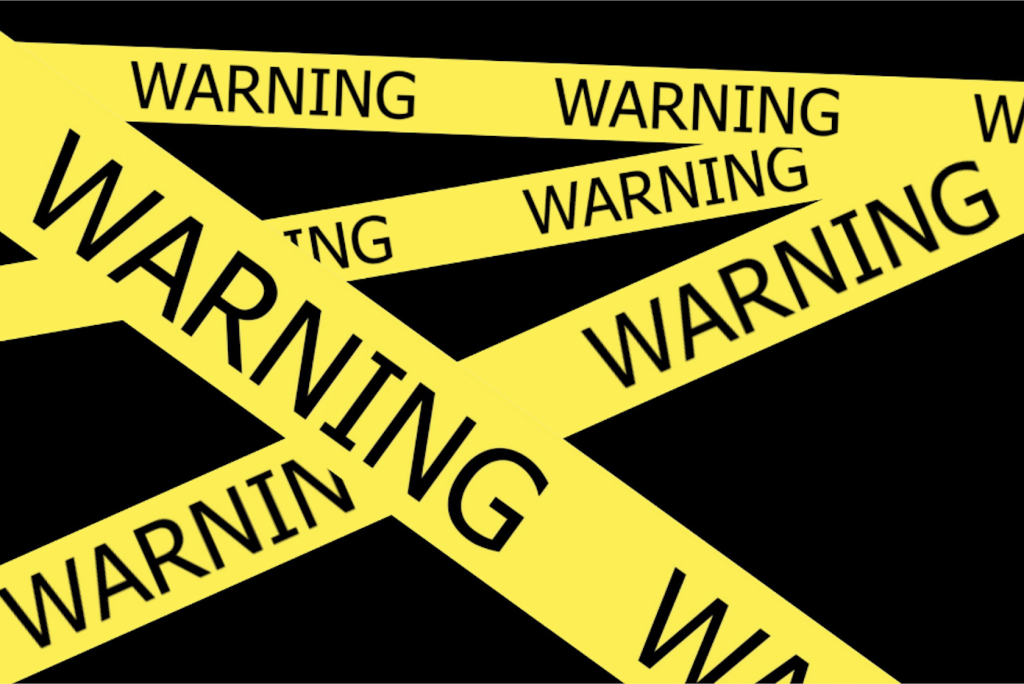Introduction
Dating violence is a widespread issue affecting people of all ages, backgrounds, and relationship types. It can take many forms, including physical, emotional, sexual, and digital abuse, each aimed at exerting control over a partner. The effects of dating violence are far-reaching, impacting victims’ physical health, emotional well-being, and overall quality of life. Recognizing the warning signs of dating violence is critical for preventing harm and seeking necessary intervention. This comprehensive guide explores the different types of dating violence, how to identify the warning signs, the profound impact on victims, and the available resources and support systems.

Types of Dating Violence
Physical Abuse
Physical abuse is the most apparent form of dating violence and involves the intentional use of force to cause harm. It includes actions such as hitting, slapping, pushing, choking, or using weapons. Victims of physical abuse may present with visible injuries like bruises, cuts, or broken bones. However, the psychological trauma inflicted can be equally, if not more, damaging. Physical abuse often escalates over time, with each incident becoming more severe. This escalation can lead to a constant state of fear and anxiety, severely impacting the victim’s mental health and sense of safety.
Emotional and Psychological Abuse
Emotional and psychological abuse is less visible but equally harmful. This form of abuse involves manipulating a partner’s emotions to gain control. It can manifest as verbal insults, threats, humiliation, intimidation, and constant criticism. Gaslighting, a tactic where the abuser makes the victim doubt their reality, is a common form of psychological abuse. Over time, emotional abuse can erode a victim’s self-esteem and self-worth, making them feel worthless and dependent on the abuser. This dependency can trap the victim in the relationship, believing they are undeserving of better treatment. The long-term consequences include severe depression, anxiety, and even suicidal thoughts.
Sexual Abuse
Sexual abuse in dating relationships involves any non-consensual sexual activity. This can range from coercion into sexual acts to outright sexual assault. It’s crucial to understand that sexual abuse can occur even within consensual relationships if one partner feels pressured, coerced, or forced into sexual activities they are uncomfortable with. The trauma from sexual abuse is profound, often leading to long-lasting emotional distress, post-traumatic stress disorder (PTSD), and physical health issues. The victim may also experience shame, guilt, and fear, which can prevent them from seeking help.
Digital Abuse
With the rise of technology, digital abuse has become increasingly common in dating relationships. Digital abuse includes cyberstalking, harassment through social media, constant messaging, and invasion of privacy, such as checking someone’s phone without permission. Abusers may use technology to monitor and control their partner’s actions, isolate them from friends and family, and maintain constant surveillance. The psychological impact of digital abuse can be significant, leading to feelings of entrapment, paranoia, and helplessness. The omnipresent nature of digital communication means that victims may feel there is no escape, exacerbating their sense of isolation and fear.

Recognizing the Warning Signs
Controlling Behavior
A significant red flag in abusive relationships is controlling behavior. This can include dictating who a partner can or cannot see, monitoring their activities excessively, and isolating them from their support networks, such as friends and family. Abusers may justify their actions as being protective or concerned, but the underlying motive is control. They may also employ tactics like jealousy and possessiveness to rationalize their behavior, further manipulating their partner’s emotions.
Intimidation and Threats
Intimidation and threats are commonly used by abusers to instill fear and maintain control. This can include threatening physical harm to the victim, their loved ones, or even themselves. Abusers may also use destruction of property or pets as a means of intimidation. The purpose of these threats is to make the victim feel unsafe and powerless, ensuring their compliance and submission. Such tactics can leave victims in a constant state of fear, afraid to leave the relationship or seek help.
Unhealthy Communication Patterns
Abusive relationships often feature unhealthy communication patterns, such as constant arguing, blame-shifting, and refusal to compromise. The abuser may belittle or demean the victim, making them feel unworthy and undermining their confidence. This toxic communication style reinforces the abuser’s control and isolates the victim from potential sources of support. It can also create an environment where the victim feels responsible for the abuse, further entrenching their feelings of helplessness.
Possessiveness and Jealousy
While some jealousy can be normal in relationships, excessive jealousy and possessiveness are major warning signs of abuse. Abusers may frequently accuse their partners of cheating or infidelity without any evidence, monitor their activities obsessively, and react aggressively to any perceived threats to the relationship. This behavior often stems from the abuser’s insecurity and need for dominance. It creates an environment where the victim feels constantly scrutinized and unable to live freely.
Unexplained Injuries
Victims of physical abuse often exhibit unexplained injuries, such as bruises or cuts, with vague or inconsistent explanations. They may attempt to hide these injuries out of fear of judgment or further abuse. Friends and family members need to be vigilant and supportive, as victims may be reluctant to disclose the true cause of their injuries. A pattern of unexplained injuries should raise concern and prompt intervention.
Changes in Behavior and Appearance
Victims of dating violence often undergo significant changes in their behavior and appearance. They may become withdrawn, anxious, or depressed, lose interest in activities they once enjoyed, or exhibit changes in sleeping and eating patterns. Changes in appearance, such as dressing differently or adopting new habits, can also indicate an attempt to cope with or hide the abuse. These changes may be subtle at first but can become more pronounced over time as the abuse continues.

Impact of Dating Violence
Emotional and Psychological Impact
The emotional and psychological impact of dating violence can be profound and long-lasting. Victims often suffer from conditions like depression, anxiety, and PTSD. The constant stress and fear associated with being in an abusive relationship can lead to a range of mental health issues, including panic attacks, insomnia, and suicidal thoughts. Emotional abuse, in particular, can deeply affect a victim’s self-esteem and confidence, making it difficult for them to trust others or engage in healthy relationships in the future.
Physical Health Impact
Physical abuse can result in a wide range of injuries, from minor bruises to serious, life-threatening conditions. In some cases, chronic health problems can develop, including headaches, gastrointestinal issues, and more severe ailments resulting from sustained physical trauma. The stress associated with being in an abusive relationship can also compromise the immune system, making victims more susceptible to illnesses and infections. The physical consequences of abuse are not limited to visible injuries; they also include long-term health complications that can persist even after the abuse has ended.
Social Impact
Abusive relationships often isolate victims from their social circles, as abusers may actively discourage or prevent them from maintaining relationships with friends and family. This isolation can be a deliberate tactic to exert control and limit the victim’s support network. As a result, victims may feel alone and unsupported, making it more challenging to seek help or escape the abusive situation. The loss of social support can lead to further emotional and psychological distress, as victims may feel they have no one to turn to.
Academic and Professional Impact
The trauma of dating violence can significantly affect a victim’s academic and professional life. They may experience difficulty concentrating, a decline in grades or job performance, and increased absenteeism. In severe cases, the stress and trauma can lead to dropping out of school or leaving a job to escape the abusive environment. The long-term impact on a victim’s education and career can be devastating, limiting their opportunities and affecting their future prospects.

How to Get Help
Resources and Support Systems
There are numerous resources available for victims of dating violence. These include national hotlines, local shelters, and counseling services. It’s crucial for victims to know that they are not alone and that help is available. National hotlines can provide immediate support and information, including referrals to local services and assistance with safety planning. Local shelters offer safe spaces for victims to escape abusive environments and access support services, including counseling and legal assistance.
Legal Protections
Victims of dating violence have legal rights and protections. This can include obtaining a restraining order, pressing charges against the abuser, and seeking legal assistance. It’s crucial for victims to document incidents of abuse, as this evidence can be vital in legal proceedings. Legal counsel can help victims understand their rights and the options available to them, including filing for protective orders and seeking custody of children if necessary.
Creating a Safety Plan
A safety plan is a personalized, practical plan that includes strategies for staying safe while in an abusive relationship, planning to leave, or after leaving. It may involve identifying safe places to go in an emergency, ways to communicate safely with friends and family, and steps to take if the abuser attempts to contact them. A safety plan can also include practical considerations, such as gathering important documents, securing financial resources, and arranging transportation. Developing a safety plan with the assistance of a counselor or advocate can help victims prepare for a safe and successful departure from the abusive relationship.
Supporting a Friend or Loved One
If you know someone experiencing dating violence, it’s essential to offer support without judgment. Listen to them, believe their experiences, and provide reassurance. Encourage them to seek help and offer to accompany them to services if they feel comfortable. It’s important to respect their decisions, even if you disagree with them. Remember, leaving an abusive relationship is a complex and personal decision that the victim must make in their own time. The role of a supportive friend or family member is to provide a safe, non-judgmental space for the victim to express their feelings and consider their options. Encourage them to reach out to professionals for additional support, but also understand that the decision to leave an abusive relationship is ultimately theirs to make.

Prevention and Education
Promoting Healthy Relationships
Preventing dating violence starts with promoting healthy relationship behaviors. This includes teaching individuals about the importance of mutual respect, open communication, and setting healthy boundaries. In a healthy relationship, both partners should feel safe, respected, and free to express themselves without fear of retaliation or judgment. Educational programs in schools and communities can play a crucial role in equipping young people with the knowledge and skills needed to build healthy relationships. These programs can cover topics such as recognizing the signs of abusive behavior, understanding consent, and the importance of equality in relationships.
Education and Awareness Programs
Education and awareness are key components in preventing dating violence. Schools, community organizations, and online platforms can provide valuable resources and information about the nature of dating violence, its warning signs, and how to seek help. Awareness campaigns can help destigmatize the issue, encouraging more open conversations about dating violence and reducing the shame and guilt that victims may feel. By increasing public awareness, these programs can empower individuals to recognize abusive behaviors and take action to protect themselves and others.
Role of Parents and Educators
Parents and educators have a vital role in preventing dating violence. They can provide young people with the tools and knowledge needed to recognize and avoid abusive relationships. Parents should maintain open lines of communication with their children, discussing topics related to relationships and dating in an age-appropriate manner. Educators can incorporate discussions about healthy relationships into their curriculum, providing students with the skills to identify and resist abusive behaviors. Additionally, parents and educators should be knowledgeable about the resources available for victims of dating violence, so they can guide young people toward the support they need.
Community Involvement
Community involvement is crucial in the fight against dating violence. Community organizations, local governments, and law enforcement agencies can collaborate to create safe environments and provide support for victims. This can include establishing hotlines, support groups, and outreach programs to educate the public and provide resources. Law enforcement can also play a critical role in responding to incidents of dating violence, ensuring that victims receive the protection and justice they deserve. By working together, communities can create a network of support that empowers victims and holds abusers accountable.
Conclusion
Dating violence, encompassing physical, emotional, sexual, and digital abuse, profoundly impacts victims’ lives. Key warning signs include controlling behavior, intimidation, and unexplained injuries. The consequences can range from physical harm to emotional and social isolation. Support systems such as hotlines, shelters, and legal protections are crucial for victims seeking to escape abuse. Education and awareness promote healthy relationships and prevent abuse. If you or someone you know is experiencing dating violence, help is available, and reaching out is a crucial step toward safety.




Leave a Reply